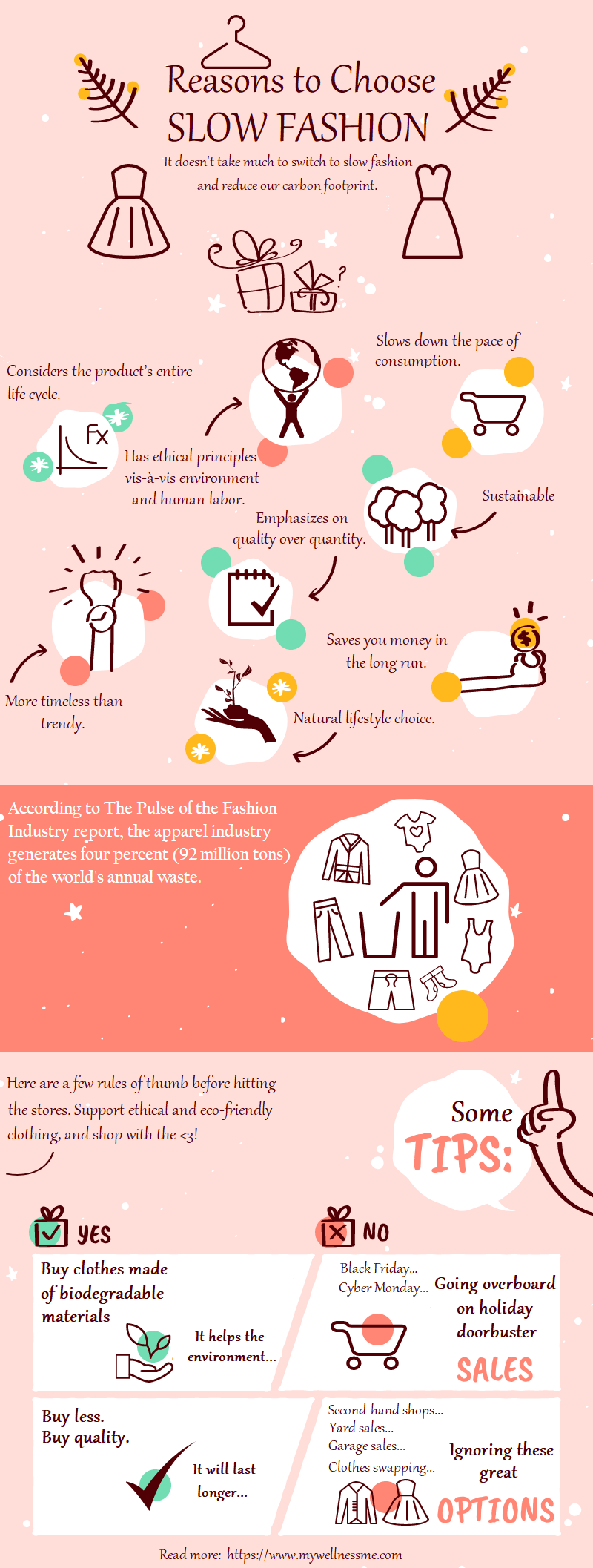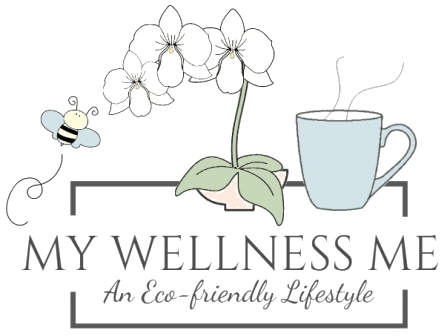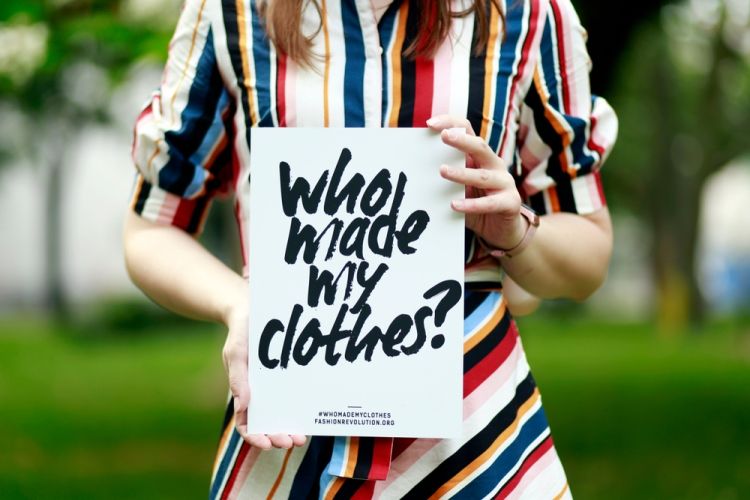What is this slow fashion movement?
Think James Dean in white t-shirt and jeans. That ensemble is relevant decades down the line because of its timelessness, which is one of the facets of the movement. Quality and longevity are others.
The world would be better if we could somehow loosen the vice-like grip of fast fashion over the market. The lure of trendy, disposable clothes is stronger than a siren song. These clothes are easy on the pocket and make you look like an absolute star, before you jump on to a new trend two months down the line.
Manufacturers, who sniff for fashion trends like anchovies around a trawler, drool at the prospect of such willing consumers.
But the tons of millions of garments produced to meet the crazy demand have negatively affected the environment and those who labor to meet the insane deadlines.
Slow fashion provides an alternative to all of this. It is classy and fashionable and, over the long run, saves you money. It also happens to be an effective way to reduce your carbon footprint.
Maybe we need to embrace slow fashion sooner than we think.
Fast Fashion vs Slow Fashion
Fast fashion will cost you time, your environment, and negatively affects the workers who break their backs to meet the ridiculous demand for clothes.
It increases shopping time. (We all like to keep up with the latest trends in clothes.) Each trip you make to the store, you’re wasting minutes. Add to those wasted minutes the time spent on washing the bought clothes and you’re talking extremely valuable minutes and hours.
It affects the environment too. Brace for some horror stats.
Thirteen million tons of textile waste that are not biodegradable accumulate on landfills every year, in the US alone.
It takes about 20,000 liters of water to produce a little over two pounds of cotton.
What of the labor that makes them? Most pieces of clothing you buy may have been made by a child or a worker living under deplorable, life threatening conditions. This is alas no longer an alarmist notion or one to spread propaganda. It is real. In 2013, a structurally faulty building in Dhaka collapsed and killed over a thousand workers.

How do you stop the tide?
The best ways are to choose biodegradable, environmentally friendly garments and stop consuming like the black hole.
We can start by buying clothes that are made from material that decomposes quickly and naturally. Abaca, hemp, jute, organic cotton, ramie, silk, and wool are good options. Synthetic fabric is biodegradable too, but they take a much longer time to degrade and have the chemical element to them.
As for the “stop the consuming” aspect, maybe that’s more hope than anything else. Stopping the juggernaut that is fast fashion is a tall order.
The one thing we can do is recycle the waste that it generates. H&M came up with an initiative to exchange old clothing for discounted vouchers. This was done with a view to recycle clothes and reduce landfill.
Even here, the methods and technology are not sophisticated enough to handle the task. It would take about 12 years to use up 1,000 tons of fashion waste. That’s the amount of clothes H&M can churn out in two days.
Perhaps we can lead by example and see where that takes us…
Buying and maintaining clothes for slow fashion
Buy less. Buy quality.
Your wardrobe will suddenly look a lot classier. Sure, you will have fewer clothes but if you buy well then each one will fit and look good on you. And you can walk around with the confidence that comes with wearing high-quality clothing.
This is not to say that you treat all fast fashion items as the plague. Mix and match but keep them as the minority in your closet, something you throw in to glamor up once a while.
Here are a few tips on slow fashion wear…
Make use of your old clothes
Lay out your wardrobe and see what you’ve got. A few garments you’d discarded that you thought were out of fashion perhaps?
Remember, fashion is cyclical. Even your parents’ bell bottoms, long consigned to history’s bin, was back in fashion for a while. Sometimes we are so taken by the new, we don’t see the immense value in the old right in front of us.
So, treat clothes like you would jewelry. A little hyperbolic I know, but paying them due respect will serve you well. Store them in a proper manner and in a way that most if not all of your clothes are visible to you. This way you will know what you own and can optimize your wardrobe.
Limiting the number of washes
How wonderful would it be if we can find another way to clean all our clothes without using our precious water? Too much washing also affects shelf life.
Dry cleaning is an option but even this process in not entirely free of chemicals.
What we can do is avoid washing machines and dry cleaners if there is an alternative way of cleaning our garments. For example, if you just want to freshen up your clothes, try using a combination of water and vodka (ratio of 3:2) in a spray bottle. Reverse the ratio for stronger smells. Also, no need to send anything to the dry cleaner if a brush does the job; good-quality wool, for instance, can be cleaned with one.
For more tips, check out how to create an eco-friendly laundry routine.
Taking care of what you have
Look after your clothes and shoes. Take your clothes to the local tailor if a problem is fixable. Or just unleash your inner elf and see how good you are with thread and needle. You’d be surprised. Take help of YouTube videos. (There’s equal amount gold and trash but if you look properly you’ll know which ones to learn from.)
And how about resoling your old shoes than buying a new pair?
Old is quality and fashionable but…
Clothes from 50 years ago are generally of a greater quality than what you find today.
And vintage seldom disappoints.
The problem is that there are a lot of fakes out in the market. If you intend to buy vintage clothes, learn how to spot a fake. For example, if someone sells you a 60s dress with “stretchable” fabric, it’s fake. Or if it has cheap plastic buttons and zippers. Also, check if the labels have been recently sewed on; it could be a knock-off.
Slow Fashion vs Sustainable Fashion vs Ethical Fashion
While elements from one can be seen in the other two, there are differences.
Sustainable fashion focuses primarily on the environment and how we can alleviate the stress on it by changing our consumption habits.
Ethical fashion focuses heavily on the social impact of fashion, such as the condition of laborers, while also highlighting the negative impact of production processes on the environment.
Slow fashion emphasizes on the consumption of garments that have quality and last a long time. Such clothes meet some of the principles of the ethical and sustainable fashion. It means we have less need to buy frequently, thereby lessening the burden on workers. Fewer clothes also mean a lighter load on landfills which is always good for the environment.
Slow fashion brands
One way to tell if a brand is environmentally conscious is to see if it likes making slight adjustments to styles over time than start a new trend every other month.
To be fair, some brands are doing their bit. Take for example Levi’s Wellthread Collection that is fashioned from 100 per cent recyclable material.
Some other companies who sing a similar tune include:
Patagonia: They produce garments that have the Bluesign seal (been naturally dyed).
Olderbrother: They use plant-based dyes and make clothes from natural fibers imported from Japan.
Kit Culture: The company uses deadstock fabrics or fabrics discarded as surplus by bigger brands.
DESO Supply Co.: They make high-quality garments based on strict ethical principles.
Renting clothes is another way to reduce environmental impact. Some great choices include Rent the Runaway, Armoire, Gwynnie Bee, and Style Lend.
But is all this enough?
At the end of the day the buck stops with us – the consumers.
It’s true that most have little knowledge of the problems generated by fast fashion. Even for those who do, the convenience and the short-term financial benefits may be too hard to resist.
Still, that doesn’t mean we stop trying. It’s good to go against the grain sometimes for rebels who believe in a valid cause.
The rise of slow fashion can no longer be ignored. It is a growing trend today. An increasing number of people are now more willing to shell out extra money to buy few quality pieces than lots of trendy clothing with a short shelf life. Does this living more on less concept appeal to you?


10 comments
This post was so interesting! I’ve been wanting to learn more about ethical fashion, but haven’t known where to start. As much as I want to save money and have cute clothes, the things that really get to me is the ethics of fast fashion. I don’t want to think that a child or a laborer in a foreign country under awful conditions and being highly underpaid has made my clothes. So in that sense, I’d rather shell out more money to have an ethical item of clothing that is of better quality and will last me longer. So thank you for listing some slow fashion brands that I can look into!
Thank you for this really great blog post! I felt like I learned a lot and now have a lot of thinking to do about the fashion industry and what I can do to help!
Emily
You’re very welcome :). The underpaid workers working in hellish conditions get to me too. The way I see it you can also save so much in the long run with high quality clothing. They last long and they look classy. And, of course, you’ll be doing your bit for the environment and humanity. Thank you for your wonderful comment.
Love this post! I’m in the process of trying to create an environment-focused podcast and blog. Fast fashion is on my list of my first 30 topics, so this was a great read for that!
Thanks Cierra. And best of luck for your blog and podcast. 🙂
Fascinating and great advice. I particularly love the infographic. I’d much rather have a few, good quality wardrobe staples than countless cheaper items that I wear just a few times, that are made from crappy fabrics.
Thanks Cheryl. I second that. Quality over crappy quantity anytime.
Thank you so much for sharing these ideas!
You’re very welcome! 🙂
That is a lot of water for cotton . . . I am not ashamed to admit I buy all my clothes used. I am not sure I have had many new clothes in my life, yet it is amazing what one can find at a used clothing store. One has to look and check but many of the pieces are in perfect condition and just begging to be worn again.
All I buy new are underwear and socks. 🙂
I wouldn’t recommend buying used under wears and socks as well lol.
Yes water footprint for some of these materials is mind boggling.
Comments are closed.